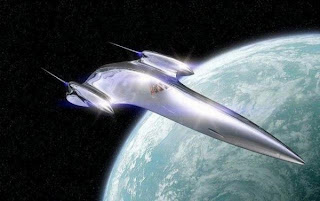 |
| Photo: spacefeelings.com |
Science fiction has offered us all sorts of visions of interstellar spacecraft, from avian-inspired Klingon birds of prey to hulking masses such as the Borg cube. In general, sci-fi leans toward sleek designs with lines borrowed from planes or cars, since those are the kinds of looks we’ve been conditioned to think of as "fast." But if there’s no air in space, why make things aerodynamic? Does it matter what a spacecraft looks like?
Yes, it turns out, and it depends upon what kind of space travel you’re looking to undertake. The reality of starship design is more complex than anything Hollywood has dreamed up and implanted in our collective unconsciousness.
While a manned interstellar mission isn’t exactly on NASA’s upcoming schedule, researchers haven’t abandoned the topic to science fiction. In fact, the 100 Year Starship initiative—which began as a DARPA-funded contest to lay the foundations for a flight across the stars, gathering physicists, entrepreneurs, and anyone seriously interested in long-distance space travel—just finished its annual symposium this past weekend.
One of the participants of the 100 Year Starship project is Marc G. Millis, founder of the Tau Zero Foundation. The foundation has proposed candidate technologies and designs, including the Icarus unmanned fusion-powered probe, which would accelerate (theoretically, of course) to one-tenth or one-fifth the speed of light. Icarus, as it’s currently envisioned, isn’t the sleekest space ride. The skyscraper-size behemoth is comprised almost entirely of rows and clusters of spherical fuel tanks. But according to Millis, Icarus isn’t a definitive, catch-all prediction of what an interstellar craft might look like. It’s simply the design that might make sense to build first.
We asked Millis, who once led NASA’s Breakthrough Propulsion Physics Project, to take us through the basics of starship design. Read full story...











